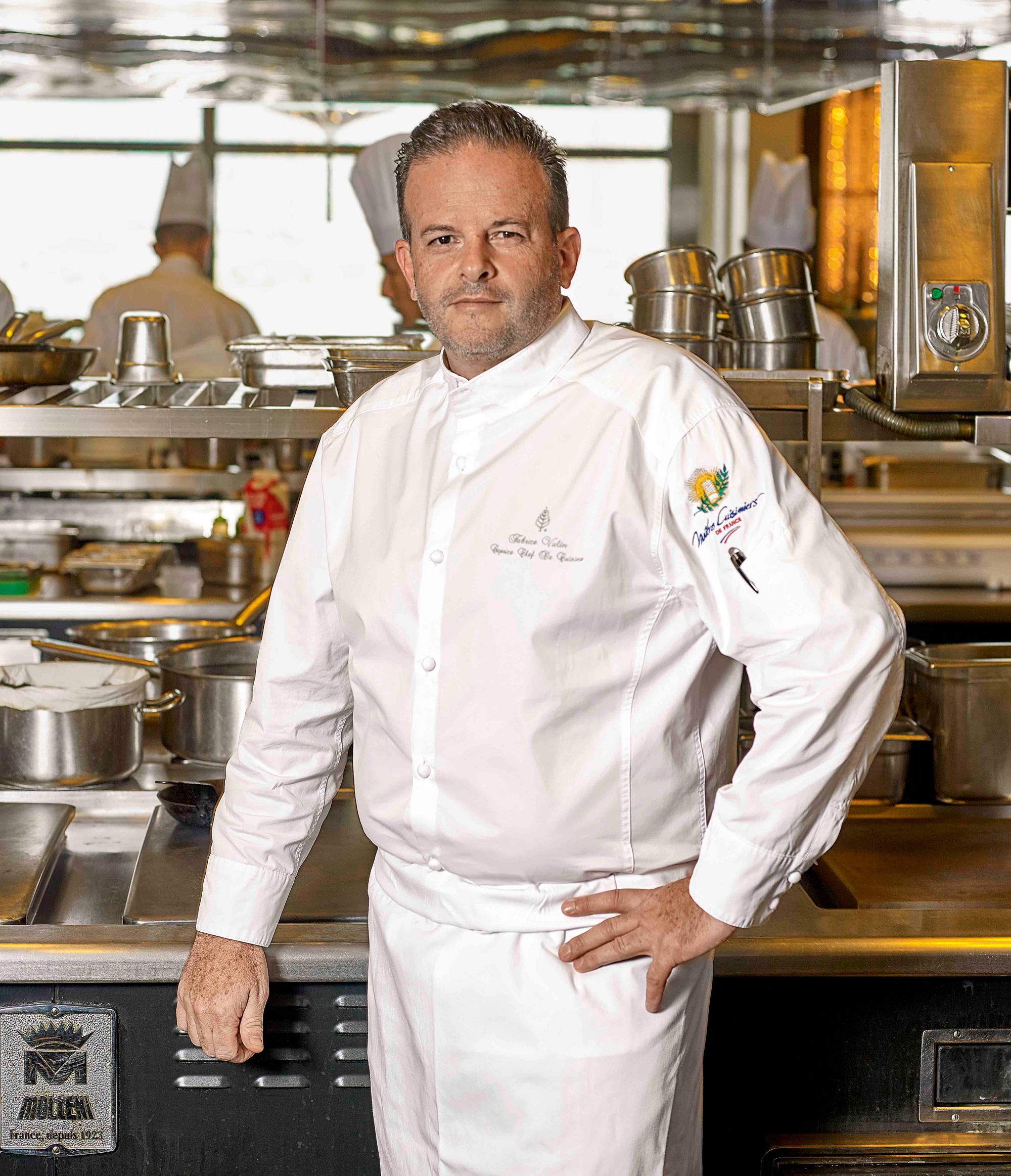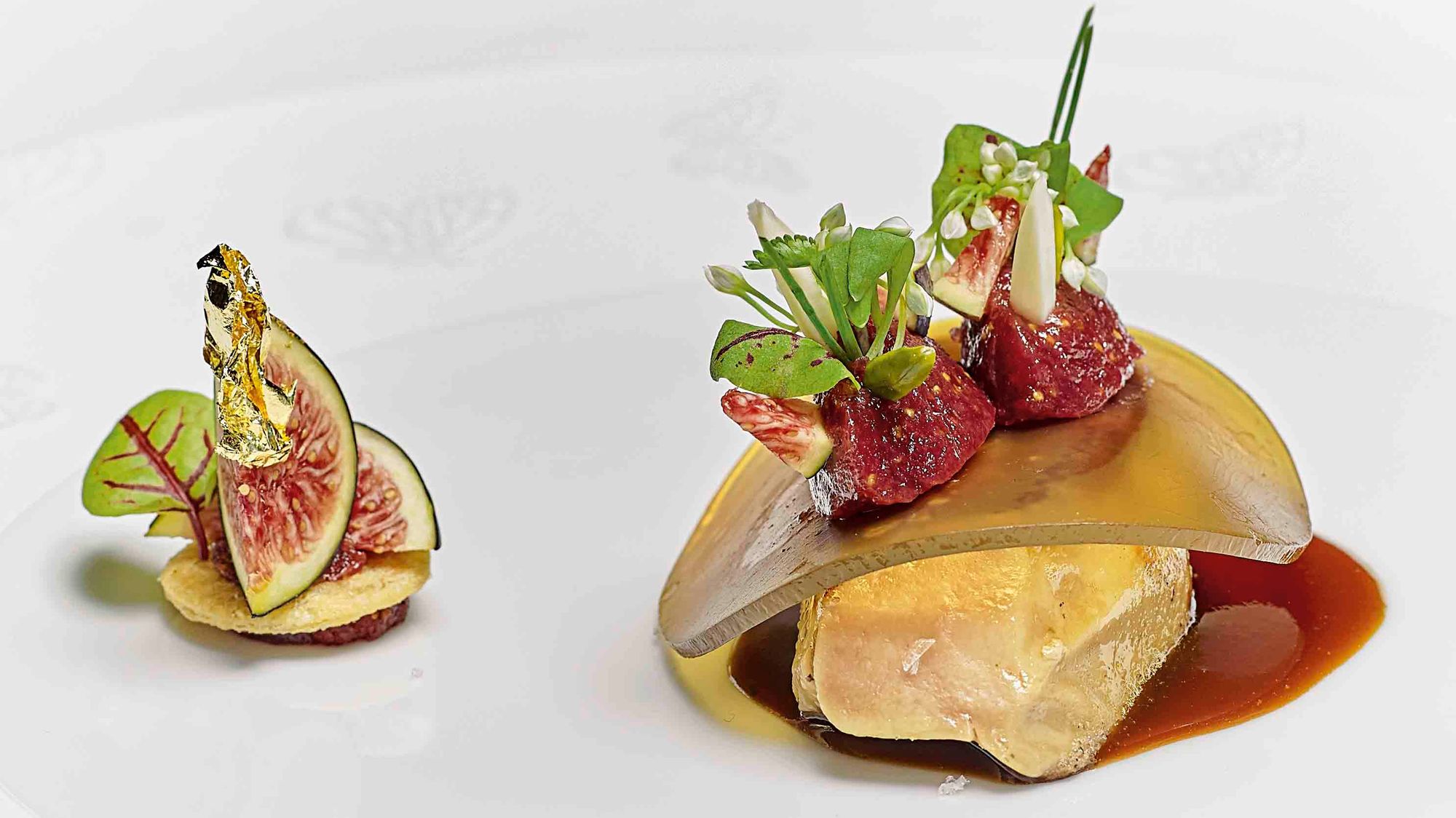by Fabrice Vulin photos by Brent Pottinger
I am honoured to join Spirito diVino Asia as contributor to a regular column entitled “Secrets de Chef”. As its name suggests, not only will I share my favourite recipes based on seasonal ingredients but I will also unveil culinary secrets for our readers to successfully prepare these Michelin-Star delights at home.

Hailing from Briançon in the French Alps, I grew up surrounded by exceptionally fresh local produce and so for me ‘la cuisine du terroir” is fundamentally important. I only use the very finest ingredients that naturally pair with one another. It is always about the taste and there are no gimmicks on my plates. While visually important, each component is there for the sake of the dish and only three or four ingredients allow for more identifiable and harmonious flavours. Legends such as Escoffier, Robuchon, Ducasse and Bocuse are my inspirations. But it is under the mentorship of Claude Legras at Hotel du Parc des Eaux Vives that I developed my culinary philosophy and approach. The 2-Star Chef taught me to truly under- stand and appreciate the cuisine of the market, cooking from day to day.
My father was a professional athlete, whom I inherited a competitive spirit and the constant strive of perfection. For me it is important never to rest and always push the boundaries. Early in my career, I was Head-Chef at Anne-Sophie Pic’s 2-Star restaurant in Valence and 3 years later, I became Executive Chef at Restaurant Hotel du Parc des Eaux-Vives, where I earned 2 Michelins stars under my name. Eager to travel, I went to Morocco and established my own gastronomic restaurant. More recently, I accepted a position at La Chèvre d’Or, elevating it to 2 stars before joining the Caprice in Hong Kong after a 30 year career richly varied and full of wonderful experiences.
For this issue, we focus on duck foie gras, now in season in France. Being one of the gastronomic heritage of my country of birth, it is a prominent “terroir” product and a culinary specialty. It is a versatile ingredient, with so many ways to prepare and enjoy. To pair this dish with wine, Jean-Charles, our Asia Editor, suggests the delightful Bra- chetto d’Acqui from fabled Piedmontese producer “Braida”. Here, the wild strawberry notes as well as the rose petals and nutmeg work extremely well with the compote and figs whilst the acidity of the wine together with the lift imparted by the mousse refreshes the palate and cuts into the richness of the foie gras delighting the taste buds at each bite. This is a beautiful discovery!
I hope my recipe and pairing tip will be enlightening and helpful to you. From this issue onwards, let us embark on a culinary journey together!

Hot Duck Foie Gras Escalope With Figs, Fig Compote in Red Win
Ingredients
1: Duck jelly
• ¼ liter of clarified duck «consommé»(Broth)
• 2g of agar agar
2: Red wine Figs compote
• 650g dried figs (Cut in small cubes:4-5 millimeters)
• 1 Sliced shallot
• 50g Sliced Parma ham
• ½ orange zest + ½ juice
• ½ Lemon yellow zest + ½ juice
• 50g Cognac
• 250g Red wine Côte du Rhône
• 2.5g of fine sea salt
• 50g caster sugar
• 20g unsalted butter
• 50g cooked beetroot
3: Foie gras + Decoration for set-up
• 6 (80g each) slices of duck foie gras
• 6 small and firm figs cut in quarters
• 3 slices of toasted buns (2 cm diameter)
• 120g duck juice Herbs and flowers for decoration
• Garlic, verbena flowers
• Pistachios and almonds in sticks
Method
Step 1: Duck jelly
- Boil one minute the «Consommé» with the agar powder
- Then, pour the jelly on a flat baking tray (2 millimeters thickness), and cool down in the fridge around 1 hour until it thickens
- Cut discs (9 cm diameter) and keep again in the fridge until needed (For step 3)
Step 2: Red wine figs compote
- In a large saucepan: Melt butter, add the shallot, figs, parma ham and cook gently 5-6 minutes without coloration
- Deglaze with cognac and «flamber»
- Pour lemon juice + zest + orange juice + zest + salt + sugar
- Then pour red wine and simmer until wine will be evaporated
- Blend and cool down in the fridge
Chef’s Secret: Just before arranging plates, you can mix the compote with the beetroot juice to increase the red color.
Step 3 : Cooking and set up
- Season foie gras with salt and pepper
- In a hot anti-adhesive pan, fry escalopes light brown color (Without adding fat), and gently place on an absorbing paper to absorb the excess of fat
- Set up (On each plate):
- Set up on right side of the plate 1 hot foie gras escalope - Place the duck jelly on it - Then, place 2 spoons on the disk jelly and decorate with flowers and herbs (like a little Garden!) - On each toast: spread the fig compote and put the figs quarters on it, and place one on the right side of each plate
Chef’s Secret: Keep the foie gras chilled until frying to get a perfect cooking, use an anti-adhesive frying pan to obtain a homogeny coloration. Do this before step 1 and 2 to save time. (Duck jelly and compote)








